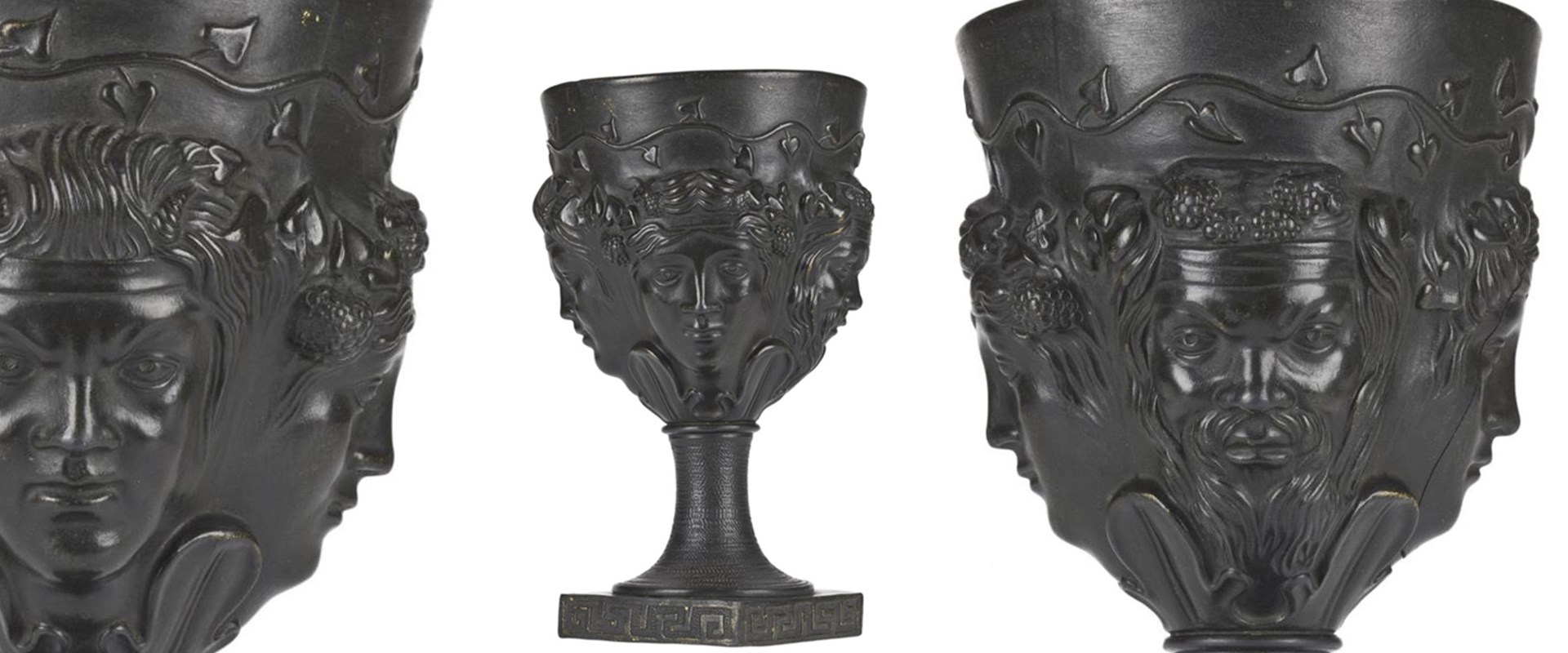Scottish Pottery: Art and Innovation Exhibition
Friday 3 February 2017 to Sunday 25 June 2017
National Museum of Scotland, Chambers Street, Edinburgh
Admission: FREE
A lesser known part of Scotland’s pottery history will be showcased at the National Museum of Scotland from 3 February 2017. Scottish Pottery: Art and Innovation will feature 27 pieces illustrating a wide collection of pottery, from everyday wares to exotic decorative pieces, highlighting a global reach that extended to south-east Asia, Canada and America.
Over 250 years ago the Scottish pottery industry began producing a wide variety of distinctive objects, with potteries springing up along the Forth and Clyde as well as further afield. The display will include several rare pieces such as an ‘Egyptian Black’ goblet made by Delftfield Pottery, one of the earliest industrial potteries in Scotland. This object is only one of two known marked pieces made by this particular pottery.
Select pieces from Wemyss Ware, one of Scotland’s most well-known potteries, will be showcased including original heart plaques commissioned by the Wemyss family who resided nearby at Wemyss Castle and painted by Karel Nekola. In 1882 the Czech born Nekola moved to Scotland to work for the pottery, and alongside founder and owner Robert Heron, developed the Pottery’s unique decorative style.
A highly competitive industry saw Scottish potteries experiment with manufacturing techniques to create popular designs.
Adrienne Hynes, Assistant Curator of Scottish History and Archaeology at National Museums Scotland said:
“The techniques potters used during this period differed depending on the style and quality of the ware being created. Sponge painting was often used in the mass production of cheap wares, whilst hand painted techniques, being much more labour intensive, were typically aimed at the higher end of the market.”
The display will illustrate the size and breadth of Scotland’s pottery industry and will be open from 3 February until the end of June at the National Museum of Scotland.
For further information and images please contact Bruce Blacklaw, Press Office, National Museums Scotland, tel 0131 247 4165, b.blacklaw@nms.ac.uk
Notes to Editors
- National Museums Scotland is one of the leading museum groups in the UK and Europe and it looks after collections of national and international importance. The organisation provides loans, partnerships, research and training in Scotland and internationally. Our individual museums are the National Museum of Scotland, the National Museum of Flight, the National Museum of Rural Life and the National War Museum. The National Museums Collection Centre in Edinburgh houses conservation and research facilities as well as collections not currently on display.
- The National Museum of is the most popular museum in the country outside of London (source: Association of Leading Visitor Attractions). The National Museum of Scotland was awarded ‘Gold’ Level Green Tourism Visitor Attraction status in 2016.

